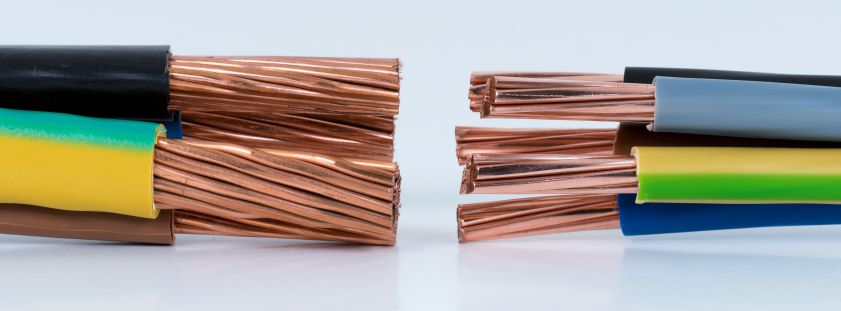Conductors that do not cause accidents but prevent them
What is a protective conductor?
igu-blog-adm | 11. October 2021

There is probably no other person who has had as great an impact on road safety as Nils Bohlin. This engineer developed the so-called three-point seat belt in 1959 , which is still standard and compulsory in all cars today and has probably saved the lives of several million people.
The introduction of a protective conductor for electrical cables is also groundbreaking. Over the last 50 years, the number of electrical accidents and electrical fatalities has fallen sharply, partly due to the presence of a protective earth conductor and the required installation instructions. These protective conductors are also in our cables. In today’s post, we explain what they’re all about and why they’re needed.
What is the purpose of a protective earth conductor?
The term is as obvious and self-explanatory as that of the seat belt. The protective conductor is an electrical conductor and is used for safety and to protect living beings in the event of a fault. Protective conductors are not current-carrying and are also referred to as PE, which is the abbreviation for “protective earth”. This is a safety device to protect against electric shock.
Let us take a 4G1.0 control cable as an example, i.e. a four-core control cable with a cross-section of 1.0mm². In this case, three cores carry current, while the fourth core represents the green-yellow protective conductor. If a residual current occurs, e.g. if a phase touches a metallic housing such as a switch cabinet, current will flow across it. If the protective earth conductor is not connected and a person touches the conductive housing, the residual current will flow through the person. If, on the other hand, the protective conductor has been installed correctly, the conductive housing is connected to earth and the residual current will flow away via the protective conductor.

Design and marking
While classic safety belts are usually monotonous black, the protective conductor according to DIN VDE 0100-540 always has the striking green-yellow colour. The reason for this is that it should be easy to see even in poor visibility conditions and should even be recognised by people with a red-green weakness. A green-yellow conductor with insulation has been used as PE since 1965. Just as the seat belt must always be used thanks to the compulsory seat belt rules, the protective earth conductor must also always be connected if it is present. The following graphs show the common symbols for the protective conductor cable or the protective conductor connection, also called earth contact, according to DIN EN 60617-2:
 |  | ||
DIN VDE 0100-540 also specifies the minimum cross sections that the protective earth conductor must have in order to fulfil its function. For nominal conductor cross sections of up to 16mm², the protective conductor must have the same cross section as the other conductors. For a nominal conductor cross section between 16mm² and 35mm², the protective conductor must have a cross section of 16mm², and for 35mm² or more nominal conductor cross-section, the protective conductor must have at least half of the respective outer conductor cross section.
Ensure functionality
In order for the protective earth conductor to be able to perform its task of discharging a residual current without error, it is a low-resistance component and must not exceed maximum permissible resistance values. In the event of a fault, this creates a short circuit and the resulting fault current is reliably discharged to “earth” via the protective earth conductor. If the protective conductor resistance were too high and not low impedance, less current would flow and a dangerous voltage would occur at the conductive device.

Earlier limits of 3Ω or 1Ω are no longer valid and are already considered high impedance and dangerous. On the other hand, there are no generally valid limit values for a protective earth conductor today; rather, the “nominal value” to be expected must be estimated or calculated by the examiner and must agree with the measurement results. The tester has to decide individually whether the measured values fit the conditions of the respective installation, e.g. the length of the conductor or the contact resistances of the contact points, and whether the safety for people and other objects is given.
Conclusion
Ideally, the protective conductor behaves like a safety belt: you install it correctly or wear it conscientiously and then don’t notice it any further. Still, it’s good to know it is there and if something goes wrong, it will do its job and potentially save lives.

We would be happy to help with any questions you may have on this topic.

